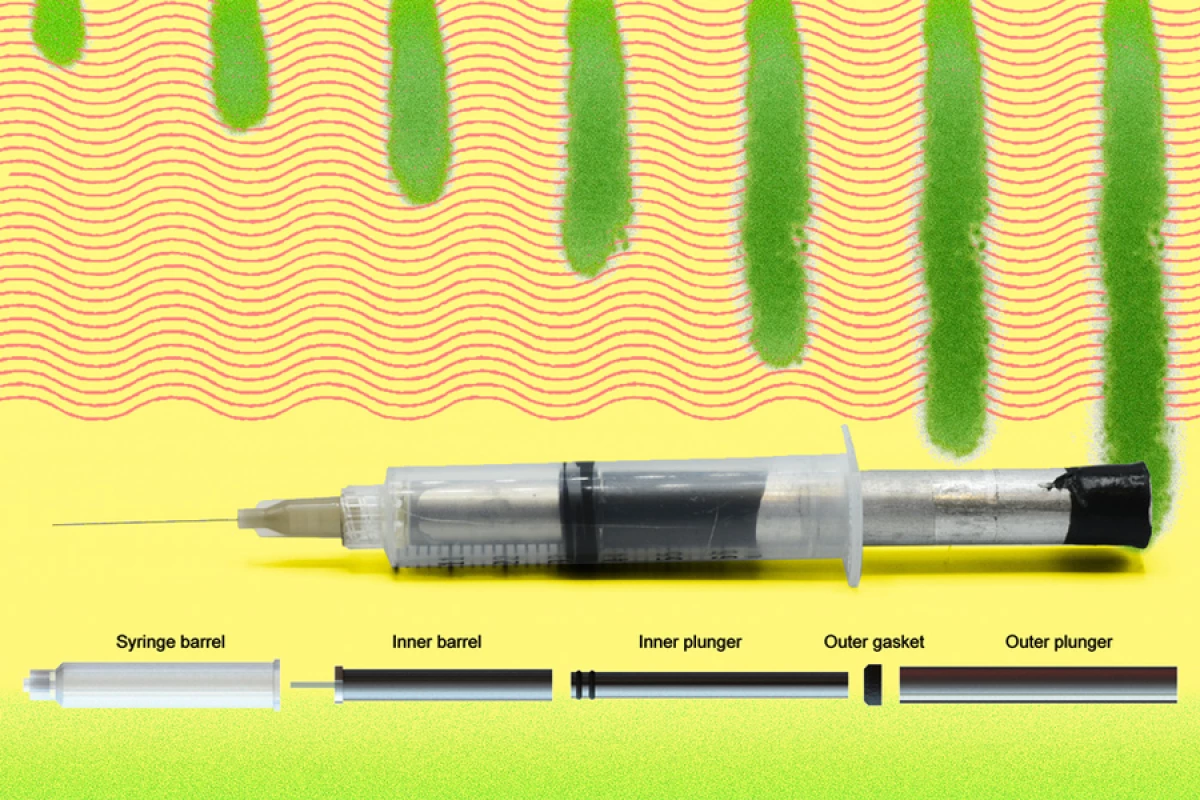Derived from living organisms, biologic drugs show a lot of promise, particularly because they can be personalized to the unique needs of individual patients. They're often difficult to inject through the skin, though, which is where a new hypodermic needle is designed to come in.
Because they're frequently highly concentrated, biologics tend to be quite viscous – enough so that they sometimes cannot be squeezed through a standard needle. Instead, they're often diluted, then administered intravenously over a sustained period. This means that patients must travel to a centrally located clinic, which may be a difficult task in remote regions or impoverished nations.
Needle-free jet injectors are one alternative, but because they're relatively expensive, they're unlikely to be widely distributed in poor countries.
Instead, scientists at MIT developed a prototype hypodermic needle with a syringe that incorporates two barrels – one inside the other. The inner barrel contains the viscous medication, while the outer one contains a biocompatible lubricating fluid. Both barrels are activated simultaneously by pressing on a single plunger.
As the medication flows out of the inner barrel, it gets coated with a thin layer of the lubricant. This allows the two liquids to easily pass through the needle. In lab tests, even the most viscous medication required just one seventh the injection force that would otherwise be required.
And as an added benefit, the biologics are subjected to very little in the way of damaging shear stress as they go through the needle. This means that the technology could conceivably also find use in the field of 3D bioprinting, for extruding fragile cells and biological tissues.
The technology was developed by Prof. Kripa Varanasi and grad student Vishnu Jayaprakash, in response to a request from the Bill and Melinda Gates Foundation. It is described in a paper that was recently published in the journal Advanced Healthcare Materials.
"There should be no reason why this approach, given its simplicity, can’t help solve what we’ve heard from industry is an emerging problem," says Varanasi. "The foundational work is done. Now it’s just applying it to different formulations."
Source: MIT




